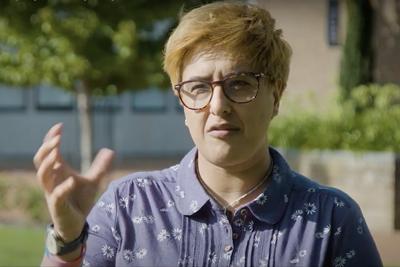British supercomputer becomes key weapon in fight against COVID-19

Professor Syma Khalid has praised the UK’s biomolecular simulation community for accelerating the quest for a COVID-19 vaccine and antivirals through a national supercomputing facility.
Speaking in a new video for the Engineering and Physical Sciences Research Council (EPSRC), the University of Southampton professor highlights how UK academics have coordinated efforts using the ARCHER National Supercomputing Service.
The Professor of Computational Biophysics and Head of Physical Chemistry Teaching at Southampton is Chair of HECBioSim, the consortium that allocates time on ARCHER for biomolecular simulations.
“When the UK went into lockdown in March, we realised very quickly that we could play a very pivotal role in the fight to combat the virus,” she explains. “Given the urgent need to develop antivirals and a vaccine very quickly, we needed large amounts of computational resource to help guide experimental colleagues. This is available to us through ARCHER.”
ARCHER is the largest high-performance computing resource which is available, free of charge, to UK academics. During the pandemic it has enabled scientists to put together the known chemistry, biology and physics of the virus into making computational models of molecules.
“If we imagine two pieces of Lego, there is one that represents the virus and another that represents humans,” she says. “Unfortunately for us, those two Lego pieces come together and fit rather well. We’re using computer simulations to design new Lego pieces that will come in and prevent that tight fit, and thereby prevent the virus from infecting people.”
This spring, Professor Khalid supported an international collaboration in building an all-atom model of SARS-COV2 (coronavirus) led by UCSD (San Diego). The work at Southampton is helping to make predictions about the structure of a protein, known as the M protein, which is found within the membrane of the virus.
Professor Khalid adds: “Because our high-performance computing resource is centralised, it provided a way of UK academic teams coming together to say ‘we have a common goal and a great resource, what’s the best way of using it?’. ‘I’ll work on this part, you’ll work on that part, and then we’ll come together’. That has been fantastic across the UK and I’d like to thank the EPSRC and ARCHER for facilitating that.”